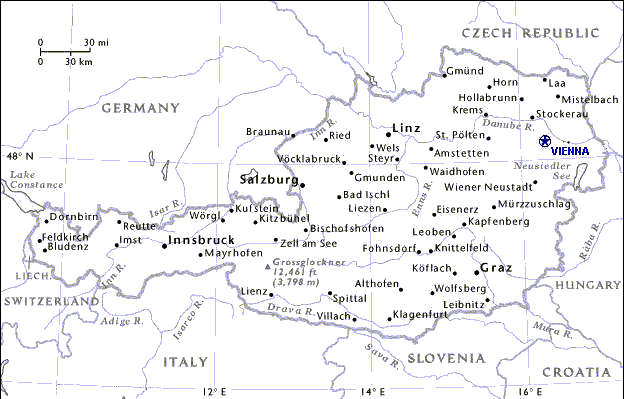Area
Population
Religion
Language
Literacy
Life Exp.
![]()
Athwart the high Alps, landlocked Austria links Western Europe to the former Soviet bloc. Accepted in 1995 as a member of the European Union (EU), Austria has increased its competitiveness by privatizing industries and reducing subsidies. Manufacturing, powered by hydroelectricity, drives the nation's export trade; Austria also profits from iron ore, oil, and timber. Forests have been damaged by air pollution, despite environmental regulations. Farms, many located along the Danube River, provide 80 percent of food needs. In early 1999 Austria became one of 11 countries participating in the euro, Europe's new common currency.
Natural grandeur and a rich culture lure visitors to Tirol and to Vienna and Salzburg. Seat of the former Habsburg empire, Vienna is a world center of the arts. It is also the headquarters for many international organizations.
